Unearthed
Now, to get a full view of how Revenge of the Mummy came to be, we have to flash back to nearly a century ago.
Image: Tutankhamun Archive, Griffith Institute, University of Oxford
It was in 1922 that Howard Carter – noted British archaeologist and leading Egyptologist – led an unprecedented search for the tomb of the lost pharaoh Tutankhamen, young ruler of Egypt’s New Kingdom. “King Tut” is thought to have ruled between about 1332 – 1323 B.C. – nearly three thousand years ago. The discovery of Tut’s tomb (official Egyptological designation KV62) by Carter and company is remembered today as one of the greatest archaeological discoveries in modern history.
It’s also noteworthy for two reasons:
Image: Tutankhamun Archive, Griffith Institute, University of Oxford
- Tut’s tomb was largely intact… a sincere rarity in the Valley of the Kings, where millennia of pillagers and raiders had desecrated most burials. (Archaeologists suggest it had been breached only twice, and its inner chambers remained sealed up unto Carter’s entry);
- Almost every member of Carter’s team died by mysterious, unexpected, and oftentimes violet means in the years following their entry to the tomb. Plagued by unidentifiable disease, uncharacteristic suicide, acts of God, and seemingly random violence, the sensationalized media of the era quickly picked up on a headline: a “curse of the Pharaohs” was striking down any who had dared enter the burial chamber protected by ancient magic.
Image: Tutankhamun Archive, Griffith Institute, University of Oxford
Of course, no one can say whether the opening of Tut’s tomb really unearthed an ancient curse determined to seek vengeance on any who disturbed the pharaoh’s resting place… but we do know that the sandstorm of media coverage ignited a global interest in Egyptology and, particularly, the mysticism of the ancient Nile Valley.
From Screams to Screens
Image: Universal
To be clear, one person who was intently watching the hysteria surrounding the decade-long effects of the “curse” was Carl Laemmle Jr., son and namesake of the founder of Universal Studios. The junior Laemmle took over as head of the studio’s production in 1928 (at the tender age of 20, mind you) where he heralded in the age of the “talkie” that his father had helped shape.
But it was in 1931 that the future of Universal fell to the young moviemaker. That year, Universal debuted two pre-code horror films that would shape the studio forever: the definitive and still-celebrated versions of Dracula (starring Bela Lugosi) and Frankenstein (with Boris Karloff as the mad scientist’s monster). Together, the two movies had turned around Universal’s sinking finances, and that meant that more monster movies were assured.
Laemmle tasked his team with creating a third creature feature: The Mummy.
The film, debuting just a year later in 1932, cast Boris Karloff once more as Imhotep, a recently unearthed Egyptian priest accidentally revived by a British archaeological expedition reading from the long-lost Scroll of Thoth. Imhotep, set free upon the Earth, scours the globe hell-bent on finding the modern reincarnation of his forbidden lover – princess Ankh-es-en-Amon – so that he can kill, mummy, and reanimate his lost love.
Image: Universal
Of course, the film (with Dracula and Frankenstein) would complete the original talking picture trifecta of Universal Horror. In the next decades, The Wolf Man, Bride of Frankenstein, The Invisible Man, Creature from the Black Lagoon, and countless more joined in turn, creating a headlining and unstoppable lineup of Universal Monsters that’s still revered today.
Returning to the Tomb
Now, fast-forward sixty years to the early 1990s. Two film producers – James Jacks and Sean Daniel – approached Universal with the concept of remaking their early monster movies for a modern audience, and recommended The Mummy as a good candidate to start with. Granted just $10 million, the duo set out to make a low-budget horror film. They just needed a director.
First, Clive Barker (creator of the darkly sexual Hellraiser) signed on and crafted a violent, grisly, sexual horror-thriller version of The Mummy before ultimately losing interest and parting ways. Next, Joe Dante (director of Gremlins) suggested The Mummy take the form of a contemporary love story, downsizing the horror and casting Daniel Day-Lewis as a brooding mummy searching for his lost love.
A sketch by Clive Barker
When he, too, left the project, Jacks and Daniel brought on George A. Romero (creator of Night of the Living Dead) whose modern-set romance/thriller film would’ve been dark and violent featuring a female archaeologist who unknowingly falls in love with the revived mummy. Universal passed.
Ultimately, the project couldn’t move forward without a director and a vision… and both finally arrived thanks to Stephen Sommers, best known for his live-action adaptation of The Jungle Book. Sommers had an idea that diverged from all the concepts that had come before… rather than a modern-set horror romance, he suggested that The Mummy be imagined as a swashbuckling action-adventure film set in the 1920s – “as a kind of Indiana Jones or Jason and the Argonauts with the mummy as the creature giving the hero a hard time."
Executives were so enamored with the concept of having their own Indiana Jones-style franchise utilizing their movie monster, they green-lit the film with Sommers attached as a director and upped the budget from $10 million to $80 million.
It paid off in spades.
The Mummy
Image: Universal
On May 7, 1999, The Mummy opened in theaters.
It would be a stretch to call Sommers’ film a “remake” of the 1932 original, except in the sense that it cleverly breathed new life into an old intellectual property and re-used some names and plot points throughout. But The Mummy was all-new and, true to Sommers’ promise, was poised to be Universal’s own Indiana Jones.
The film – set in 1926 – follows adventurer and treasure hunter Rick O’Connell (played by Brendan Fraser) and posh, independent librarian Evie Carnahan (Rachel Weisz) who unwittingly revive the rotting remains of disgraced high priest Imhotep with the long-lost Book of the Dead. As Imhotep seeks out and devours the crew that opened his chest one-by-one, he regains his human form (played by Arnold Vosloo), seeking to reanimate his forbidden love, Anck-su-Namun, as the ten plagues of Egypt rein down.
Image: Universal
Alright, so the globetrotting adventure might not have won any Academy Awards… but the mile-a-minute fun of the film did make it a summer blockbuster, and it handily earned $416 million against its $80 million budget.
And you know what that means.
The day The Mummy was released, The Mummy Returns was green-lit. Two years to the week later, the sequel (arguably even more fun, absurd, and adventurous than the first in its way) earned $433 million more. Not to mention, The Mummy Returns jumpstarted a Saturday morning cartoon that aired on Kids WB (The Mummy: The Animated Series), a third film (the universally panned Tomb of the Dragon Emperor, which earned $400 million, too), and a spin-off film series, The Scorpion King (with four entries of its own) that made Dwayne "The Rock" Johnson into a household name.
This much was clear: even by the dawn of the New Millennium, Universal had found their new hit – a true Indy-sized franchise ripe for the picking. Next, they just needed to find a way to leverage it in their theme parks…
From Downtown to Tomb
Image: Universal
When the 2001 opening of The Mummy Returns brought the box office gross for the series near to a billion dollars, it assured that The Mummy would be the first foray into updating Universal Studios Florida. The question is… where would it go?
Bolstered by the promise of rejuvenating their Studios, Universal looked out across its slate of opening day dark rides and saw the perfect place: the massive, gargantuan soundstage (one of the largest showbuildings ever developed for a theme park) on the streets of New York, concealed behind the white marble exterior of Penn Station….
Kongfrontation closed forever on September 8, 2002 – the first of Universal Studios Florida’s opening-day masterpieces to fall to progress.
At once, the six-story showbuilding became a construction site as the streets of New York fell. In dismantling one of the most elaborate attractions in Orlando, Universal opened up an unprecedented blank canvas with 62,000 feet of cavernous soundstage interior to work with. (They also, by necessity, left large swaths of Kongfrontation’s track bolted to the ceiling, given that the former ride was quite literally built into the soundstage’s structure.)
Image: Universal
Working closely with film director Stephen Sommers, Universal devised a plan for what they deemed “the world’s first psychological thrill ride.” An ambitious promise, they were mostly right – Revenge of the Mummy is a roller coaster that cleverly disguises itself as a dark ride, with vignettes designed to antagonize… from beetles (entomophobia) and spiders (arachnophobia) to corpses (necrophobia) and darkness (lygophobia), the ride is perhaps best understood as a haunted house thrill ride teasing out one particular “phobia:” fear of the unknown.
Premier Rides of Maryland was brought in to manufacture the roller coaster itself, utilizing their industry-shaping LIM (linear induction motor) technology.
The LIM system – first used in 1996 on Premier's Flight of Fear roller coasters at Kings Island and Kings Dominion – uses electromagnetic fields to launch roller coaster trains. It's simpler than it seems. On an LIM-launched coaster, linear induction motors are bolted to the roller coaster's track, while each train is affixed with metallic fins that pass through a groove in the motor. When supplied with electricity, the LIM becomes an electromagnet, attracting-in and then repelling-out the train's fin. When LIMs are lined up down a coaster's track and powered in succession, they can create gradual and quick acceleration (a launch) using magnetism: a non-contact force!
(It doesn't hurt that LIMs have a distinct electrical hum that's music to coaster enthusiasts' ears.)
The advent of LIMs was a big deal, because before LIM technology, roller coaster launches relied on dropping heavy counterweights, spring tension, friction wheels, flywheels, or diesel engines to catapult trains... systems which can – and do – fall victim to friction, sometimes shredding cables, spraying riders with shrapnel, or failing to gain enough speed to complete the ride circuit.
On Revenge of the Mummy, LIMs would be ingeniously placed at intervals along the coaster's "dark ride" section, giving gradual, continuous miniature "boosts" to keep the cart moving like a traditional dark ride. Then, at key points during the ride, grouped LIMs would gradually and rapidly accelerate the train to the ride's top speed.
Image: Premier Rides
Dynamic Attractions was also brought in to construct some tricky track sections that would turn, rotate, and realign the vehicles to do things riders simply wouldn't be expecting.
Combined with that fear of the unknown, the unassuming statistics behind the coaster (which, on paper, reads as a clear family roller coaster with a height barely topping 40-feet and a 40 mile-per-hour top speed) into a three-minute thrill ride that's as fun, energized, and electric as the films. And for $40 million, we would sure hope so.
Ready to face the Revenge of the Mummy? We’ll take a journey into Imhotep’s tomb on the next page! Read on…
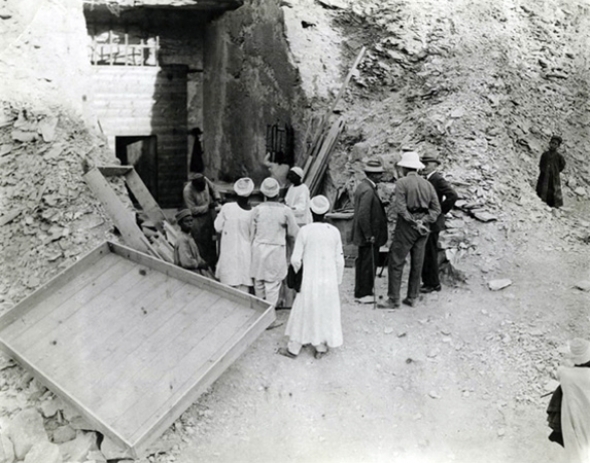
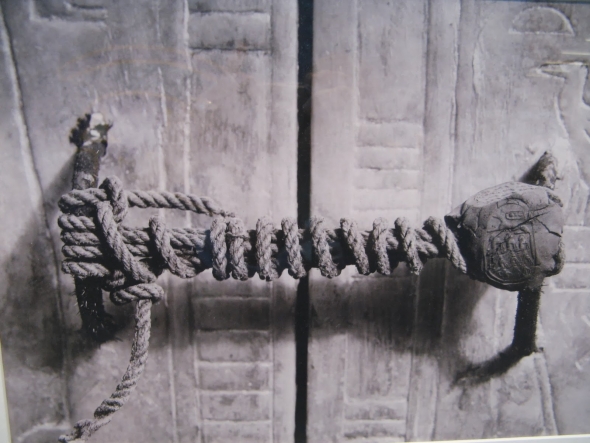
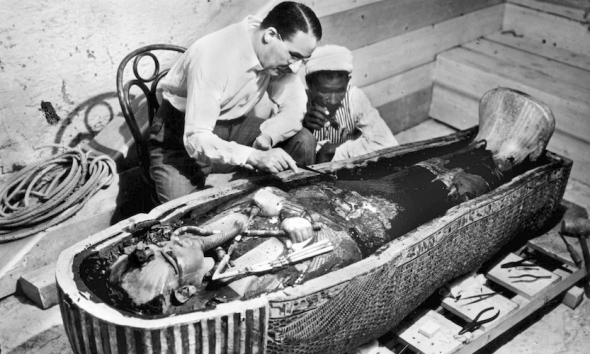
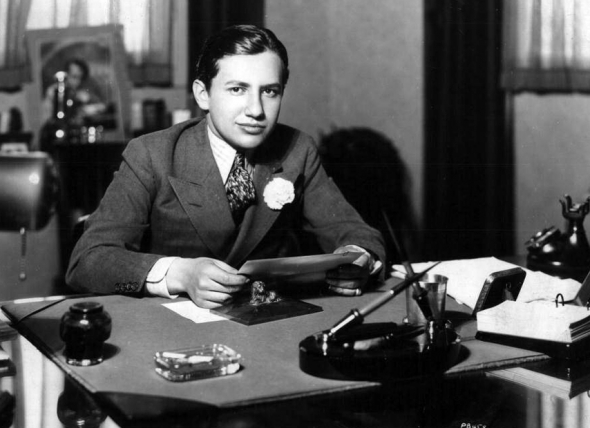
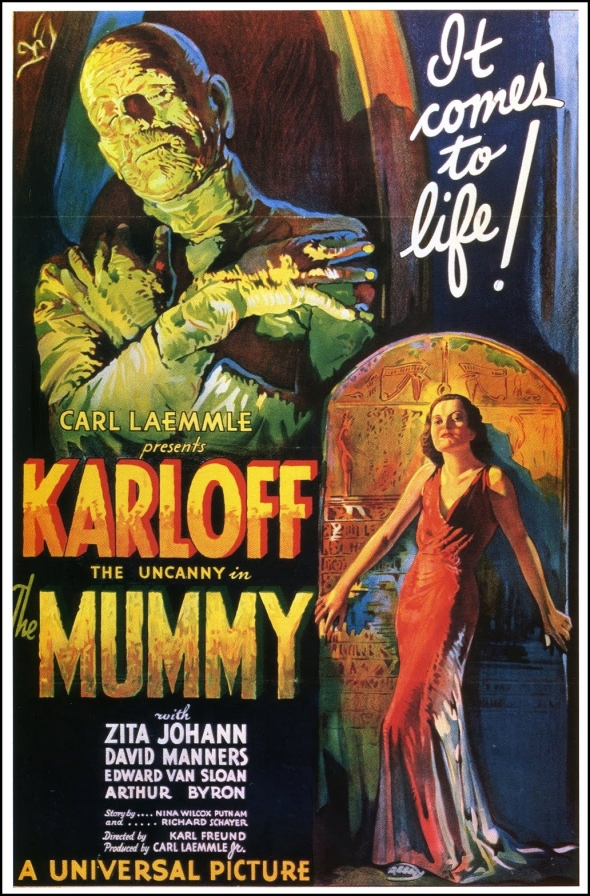
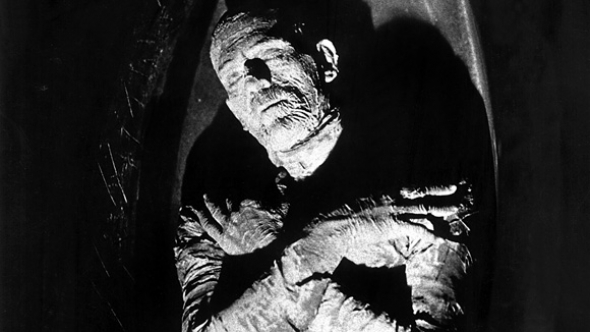
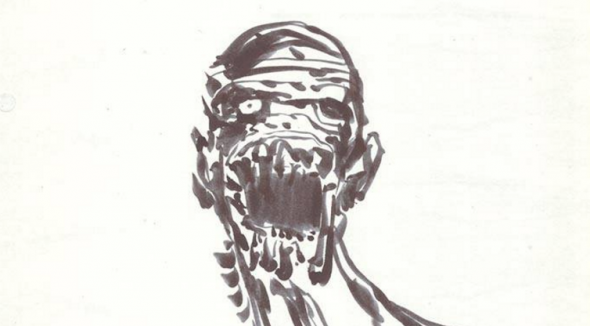
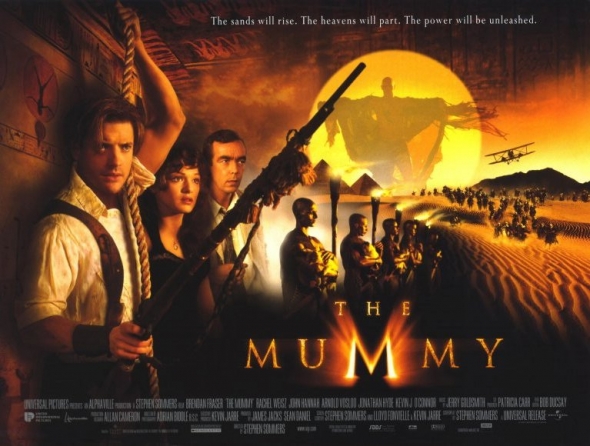
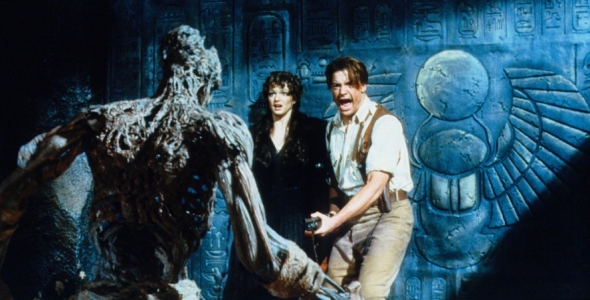

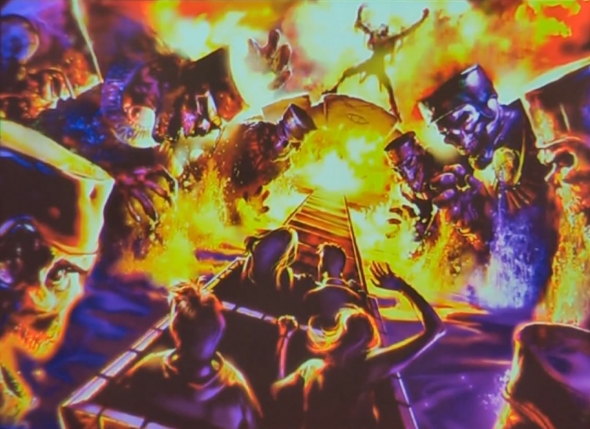
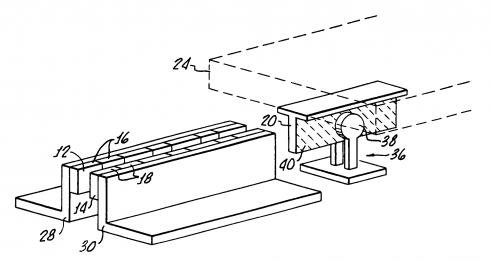
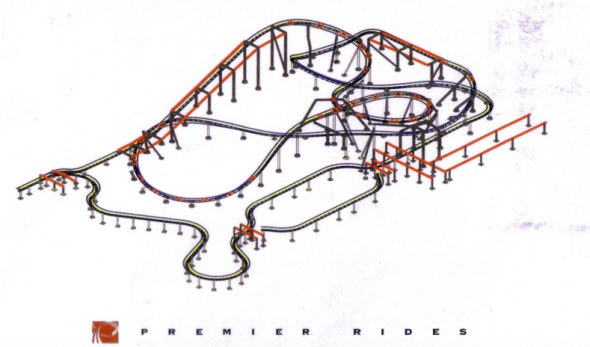

Comments
Really love these articles! Although I thought it was worth sharing my own personal headcanon for why the Florida version seems to constantly switch between "real" movie set and "real" Egyptian tomb, keeping in mind of course that this is all just a theory and may not have been what Universal Creative had in mind. Anyway, the way I justified it was that we were indeed in Imhotep's "real" tomb, but the film crew decided to shoot the next "Mummy" sequel here to add some authenticity. So in a way, it's both a tomb and a film set. Or, if you want the theming to match the surrounding New York area, then maybe you're not in a tomb, but maybe an Ancient Egypt exhibit in New York's museum that features Imhotep's real mummified corpse along with many of the relics that were found in his tomb? I know, this is all a little reaching, but it's better than nothing!
Being a younger theme park enthusiast, my first ride on Revenge of the Mummy was when I was only eight-years-old, having finally reached the height requirement. As a California native, I still haven't managed to ride any other iterations of the ride other than Hollywood's, yet for years I was practically obsessed with the ride and 1999's "The Mummy". I guess it's odd for someone that young to thoroughly enjoy a thrill ride like that, but Revenge of the Mummy is what initially launched my love for theme parks. However, I would not describe Hollywood's iteration as a modern marvel. From the videos I've watched, Orlando and Singapore's certainly seem to be modern marvels though. I'll have to check them out one day! And on another note, this isn't necessarily a modern marvel anymore, but an attraction that I consider a lost legend is Universal Studios Hollywood's Terminator 2: 3D. This year marks 5 years since its closure, and although I understand that Minions appeal more to families than Terminator did, I still miss it to this day!